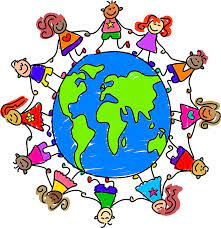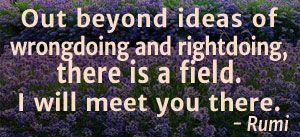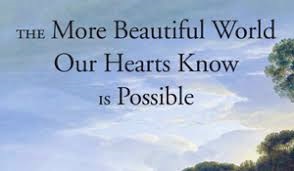Imagine a day, not too far off, when each encounter you have is met with empathetic understanding. The person who has mistakenly tail-ended your car, the phone company employee, the government official, the person whose view on vaccination differs from your own, each listen with care to what you have to say. What if, for the first time since the decline of collaboration as the social norm 10,000 years ago, we humans have the wherewithal within easy reach to transition to a collaborative, empathetic and peaceable world?
As I see it, the happy arrival of two widely accessible social tools, Social Media and the Nonviolent Communication (NVC) model changes the ballgame. These two concepts used together now open the way for an #letsbepeacable movement to emerge and ‘go viral’, normalising nonviolent interactions between people across the globe. Are you a willing to be an ally and carry this vision with me?

If you feel weighed down by the judgemental labels flung across social media, family dinner tables, political forums, and woven into self-talk, that separate us from each other, you are not alone. Indeed, as Jiddu Krishnamurti explains, “It’s no sign of good health to be well adjusted to a sick society.” What I sense is that people are poised, ready for a transformational way to safely negotiate difference and restore community. When the ship is sinking, passengers search for lifebelts.
Normalising nonviolence could avoid the ship of humanity sinking. After all, the hierarchical model of power over others so entrenched in our society is not the only way. I worked alongside the forest dwelling Ba’aka people, hunter gatherers, in Central African Republic. Like Quakers, the Ba’aka social model is based around collaboration not competition, and their is no hierarchical leadership. We in the West could structure things differently too: research shows our one year-olds are naturally collaborative until they are socialised in childhood to see right/wrong thinking and competion as the acceptable norm. So imagine our common future once organisations, government, school, and business, are redesigned for empathy and collaboration to be the expected standard.

A grassroots social movement with groundswell strong enough to open the way for the emergence of empathy as the norm for the 21st century may seem fanciful, yet it’s surely worth exploring. Let’s consider the ‘seeds of war’ in judgemental behaviour, the power of the Nonviolent Communication (NVC) way of life to transform human interactions, and how social media could role model nonviolence into the furthest reaches of the globe.
“When two people relate to each other authentically and humanly, God is the electricity that surges between them.” Martin Buber
Culture wars about ‘who is right’ and ‘who is wrong’ disconnect us from each other, yet judgemental language is currently normalised and accepted in all strata of society. Perhaps you yourself still view others through a lens of ‘who is right’ and ‘who is wrong’?
In contrast, the NVC model provides a tool to create judgement-free interactions. The approach was developed by clinical psychologist, Marshall Rosenberg (1934 – 2015) out of research into the causes of violence, and how to reduce it. Rosenberg was curious why some people remained non-judgemental and open however those around them behaved; while others shifted into blame, judgement, and retribution. He encapsulated his findings into a practical tool. For the first time, the option of a nonviolent response is in easy reach of everyone for each face-to-face, email, group or social media encounter.

It is not always clear that ‘nonviolence’ is not an absence of something. It’s actually an affirmative choice about how to show up in the world: the ‘Ahimsa’ philosophy behind Gandhi’s movement. ‘Non-violent’ people simply avoid violent acts; those practising ‘nonviolence’ choose their behaviour to build peace. That hyphen makes all the difference!
“All that has been integrated into NVC has been known for centuries about consciousness, language, communication skills, and use of power that enable us to maintain a perspective of empathy for ourselves and others, even under trying conditions.” Marshall Rosenberg
Nonviolent communication is a simple process and easy to learn. With an understanding that all humans share the same array of ‘universal basic needs’ and this is what connects us, practitioners learn to reframe dialogue in a non-judgemental way, following a four-step process: Observation – Feeling – Need – Request. With judgement removed, a person finds it straightforward to honour the needs of ‘the other’ as well as their own, needs often hidden deep below the dialogue.
It’s 5 years since a friend explained how there was an alternative way to relate to others called ‘nonviolent communication’. It was news to me: I’d been brought up to believe winning arguments and tolerating judgements that others came out with was simply ‘how the world worked’. Now that I have adopted this alternative approach to life, judgements from others (and self) no longer restrict my spirit, the bouts of depression that used to burden me have gone, and adopting an NVC approach has made interactions with others so much less stressful.
Take what happened to me last week for example. “Jane, you’re disrespectful and uncaring,” my neighbour, with whom I normally get on well, called out. Years ago, I would have reacted with self-justification, grovelling apology, or verbal counterattack, perhaps all three. No longer. At the core of NVC is the understanding that in every action or behaviour, ‘everyone is meeting their needs the best way they can at the time’, and I recognised my neighbour was doing just that, albeit in a clunky way. For unrelated reasons she’d had a difficult week, and my genuine mistake, not noticing where a friend had parked, had triggered her anger. Though her words were set to push us apart, I could look beneath her words, guessing her hidden longing for connection and empathy, and that was what I honoured. The potential ‘seeds of war’ germinated into deeper closeness.
After developing the NVC approach, Rosenberg initiated peace programs in war-torn nations, held workshops in 60 countries, and set up NVC schools. Today hundreds of NVC trainers across the globe teach this nonviolent approach to life, while many other initiatives such as the Alternatives to Violence Project, Restorative Circles, and Alcoholics Anonymous similarly seed peaceable engagement into diverse communities. At the same time within western society, growing numbers seek to transition to lifestyles in flow with the earth and their peers. Eco-philosopher Joanna Macy calls this shift, ‘The Great Turning’.
“While the initial activity might seem to exist only at the fringes, when their time comes, ideas and behaviours become contagious: the more people pass on inspiring perspectives, the more these perspectives catch on. At a certain point the balance tips and we reach critical mass. Viewpoints and practices that were once on the margins become the new mainstream.” Joanna Macy
Nonviolence still hasn’t mainstreamed though, despite these pockets of peaceable engagement. So that’s where social media, often slammed for its destructive effects on community, comes in. Like fungal mycelia that spread unseen through the soil, social media has the capacity to carry a countercultural message of nonviolence into the heart of every community in the world.
I’ve been spending an hour or two each week over the past two years on Facebook and Twitter, experimenting with NVC. I seek to engage with the angriest or most abusive person I can find and the outcomes are heart-warming. The angry, anti-government gun-toting Republican ‘antivaxxer’ turns out to be an anxious father wanting the best for his pre-schooler; the climate change denier is simply prioritising fears about mortgage payments on his family’s home if he lost his job in the oil-industry. For me, there’s still a sense of wonder every time the dialogue opens up as the other person realises there is no judgement, no ‘being right’ or ‘being wrong’.
There’s a challenge with engaging peaceably on social media though – its countercultural, so can feel lonely and rapidly drains my capacity. In a world geared for people to hold power-over positions, at times when support is lacking, it’s easy to feel like retreating to old adversarial ways. Other times, I find myself on the verge of giving up: pushback feels intense when a person swears, aims to diminish my value, or mocks my words. And while for me the words of Marshall Rosenberg hold true, “There’s no information about the person being judged in a judgment,” it’s not something I’d want others to face alone.
I envisage people coming on board #letsbepeaceable as self-created three-person ‘seedpods’ to ensure no-one attempts NVC without mutual support. If a person has others to mourn with when things don’t go right, and to celebrate with when they do, they are much more likely to continue with the as-yet countercultural NVC approach to life. Apps could support the movement with online NVC training and access to experienced NVC trainers, underpinned with information crowd-sourced, Wikipedia-style.
“Never doubt that a small group of thoughtful committed individuals can change the world. In fact, it’s the only thing that ever has. ” Margaret Mead
An #letsbepeaceable movement with robust support could reclaim social media as a peaceable public space. (Remember when Facebook was just a way to connect with friends?) Encountering someone who has dropped judgement of others inspires curiosity and seems to be catching. Furthermore, social media provides a perfect practice space for learners of NVC because written dialogue leaves time to think. Imagine the culture of nonviolence reverberating throughout virtual spaces until it spills out across the real world.

And that’s where you may come in. Inspired by the famous injunction of Margaret Mead, I’m seeking others to join me as a ‘#letsbepeaceable pod’ online to co-vision how an #letsbepeaceable movement could take root and grow. Would you be willing to be one of them?

Leave a comment